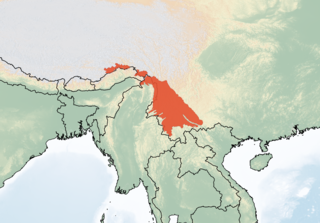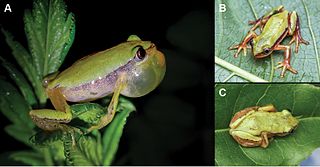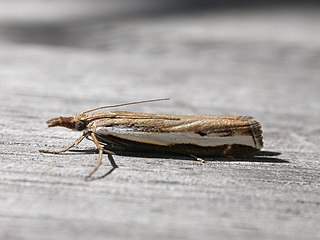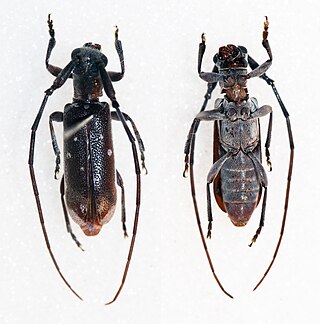Andrachne is a genus of flowering plants in the family Phyllanthaceae described by Linnaeus in 1753. It is one of eight genera in the tribe Poranthereae.

The dibatag, or Clarke's gazelle, is a medium-sized slender antelope native to Ethiopia and Somalia. Though not a true gazelle, it is similarly marked, with long legs and neck. It is often confused with the gerenuk due to their striking resemblance. The typical head-and-body length is about 103 to 117 cm. They stand up to about 80 to 90 cm. Male dibatag weigh between 20 and 35 kg, whereas females range from 22 and 29 kg. The length of the curved horns, present only on males, is typically between 10 and 25 cm. The upper parts are gray to fawn, while the dorsal and lateral areas are cinnamon to rufous. The underparts, rump and the insides of the legs are all white. While markings are visible on the face, there are none on the flanks or the buttocks.

Charles Baron Clarke was a British botanist. He worked in as a civil servant in British India in the Bengal education department. He was also keenly interested in botany and held the position of superintendent of the Calcutta Botanical Gardens from 1869 to 1871. During this period he became a specialist on the Cyperaceae and based on their distributions developed an influential phytogeographical classification of British India.

Clarke's vole is a species of rodent in the family Cricetidae. It is found only in China.

Afrixalus clarkei is a species of frog in the family Hyperoliidae. It is endemic to southwestern Ethiopia and has been recorded from near Chira, Jimma, Bonga, and Bodare. The specific name clarkei honours Mr and Mrs R. O. S. Clarke, who are acknowledged for their help and hospitality. Common name Clarke's banana frog has been coined for this species.

Eremophila clarkei, commonly known as turpentine bush, is a flowering plant in the figwort family, Scrophulariaceae and is endemic to Western Australia, South Australia and the Northern Territory. It is a shrub which is variable in form, but usually with narrow leaves and white or pale pink flowers. It is similar to Eremophila georgei and Eremophila granitica.

Orocrambus is a genus of moths of the family Crambidae. All species are endemic to New Zealand.
Trochocarpa clarkei, commonly known as lilac berry, is a rare flowering plant in the family Ericaceae. It is endemic to sub-alpine areas of Victoria in Australia. It is a shrub which grows to around 30 cm high. The flowers are maroon with a greenish base. The fruits, which appear in autumn, are about 8 mm in diameter. These are eaten by small mammals and birds. The species occurs in subalpine areas of the southern highlands, often in association with Eucalyptus pauciflora.

Siphonalia is a genus of sea snails, marine gastropod mollusks in the subfamily Siphonaliinae of the family Buccinidae, the true whelks.

The Clarke's triplefin or Clarke's threefin is a species of triplefin blenny in the genus Trinorfolkia. It was described by Alexander Morton in 1888 from specimens collected from Clarke Island in the Bass Strait. This species occurs I southern and western Australia from Camden Haven in New South Wales to Rottnest Island in Western Australia and around Tasmania. It occurs on coastal reefs and in estuaries frequently being observed around the pylons supporting structures such as jetties.
Gahnia clarkei is a species of evergreen plant from a sedge family that can be found in Australia. The plant is 1.5–2 metres high, with the same width. They grow during summer and have large black to brownish flowers. The flowers contain heads that produce small red seeds.

Orocrambus clarkei is a moth in the family Crambidae. It was described by Alfred Philpott in 1930. This species is endemic to New Zealand. It is known from Mount Moltke, Minaret Peak, Homer Saddle and the Humboldt Range.

Eunidiini is a tribe of longhorn beetles of the subfamily Lamiinae. It was described by Téocchi et al. in 2010.

Eunidia is a genus of longhorn beetles of the subfamily Lamiinae.

Iris clarkei is a species in the genus Iris, also the subgenus of Limniris and in the series Sibiricae. It is a rhizomatous herbaceous perennial, from Asia, including north east India, Nepal, Tibet, Bhutan, Burma and in China. It has grey-green leaves, long and thin green stem and violet, to dark blue, to blue or reddish purple flowers.

Eunidia tripunctata is a species of beetle in the family Cerambycidae. It was described by Per Olof Christopher Aurivillius in 1911.
Eunidia subtesselata is a species of beetle in the family Cerambycidae. It was described by Charles Joseph Gahan in 1909. It is known from Kenya, Ethiopia, and Somalia.
Eunidia batesi is a species of beetle in the family Cerambycidae. It was described by Olliff in 1889.

Eunidia thomseni is a species of beetle in the family Cerambycidae. It was described by William Lucas Distant in 1898. It is known from Tanzania, Cameroon, Chad, Niger, Ethiopia, Senegal, Mozambique, Botswana, Namibia, Saudi Arabia, the Central African Republic, Somalia, Uganda, South Africa, Yemen, Kenya, and Zimbabwe.
Heightingtonaspis is an extinct genus of primitive arthrodire placoderm fish from the Devonian period in Great Britain, and currently contains three species.












